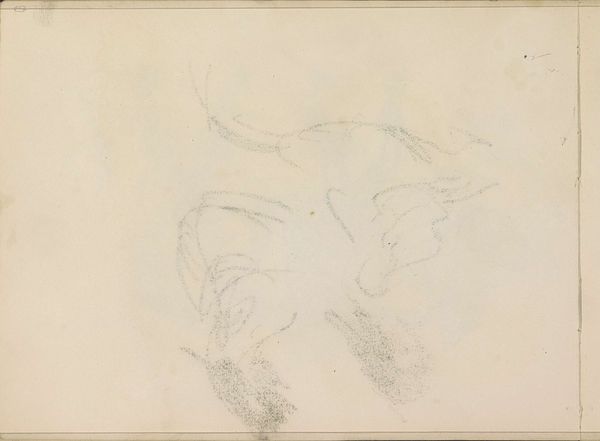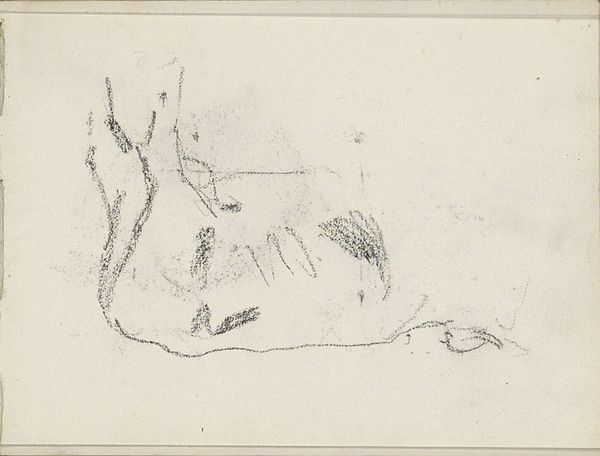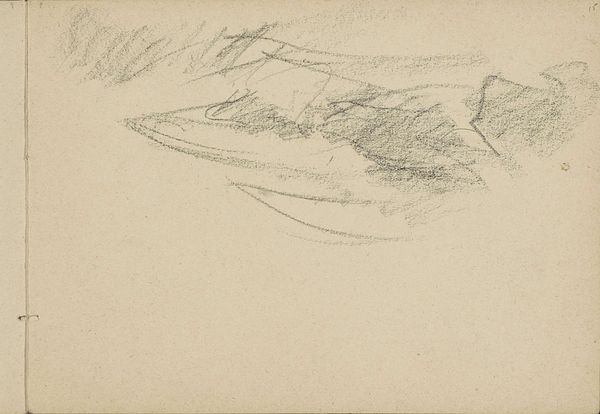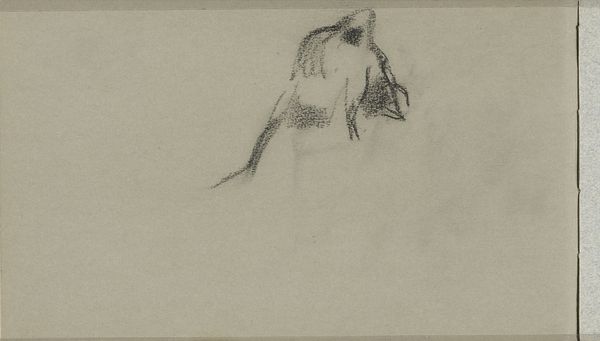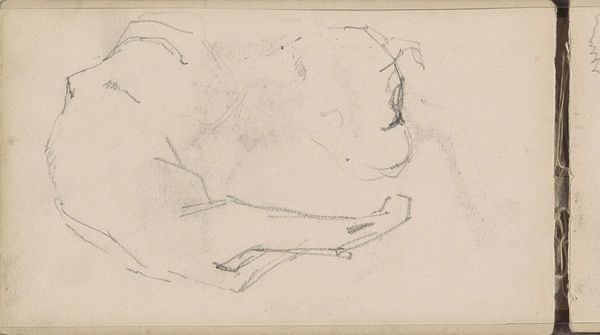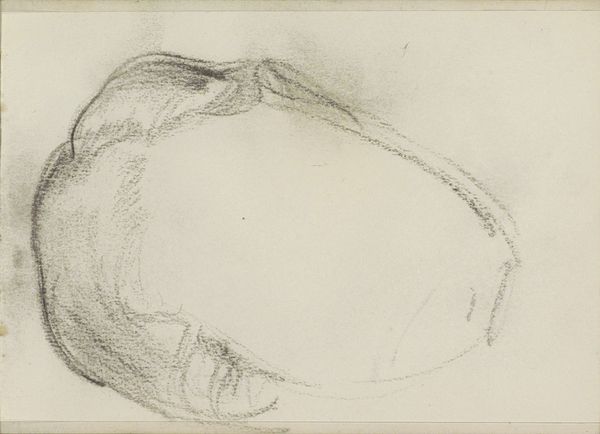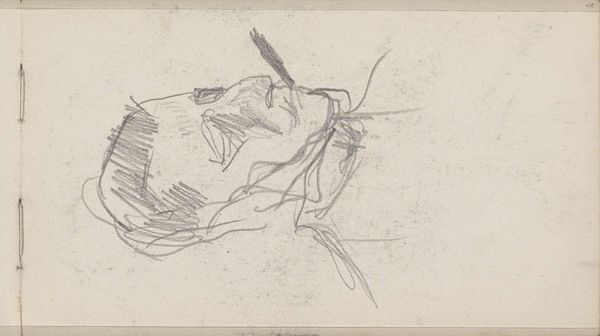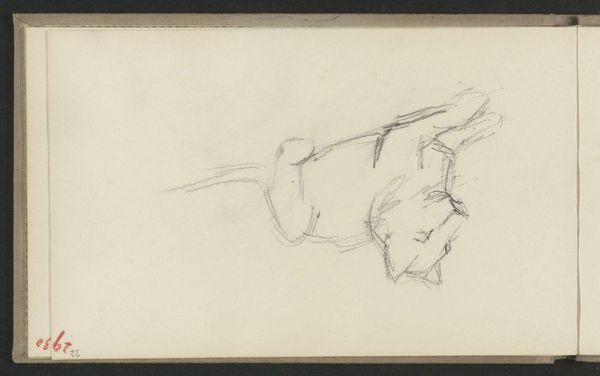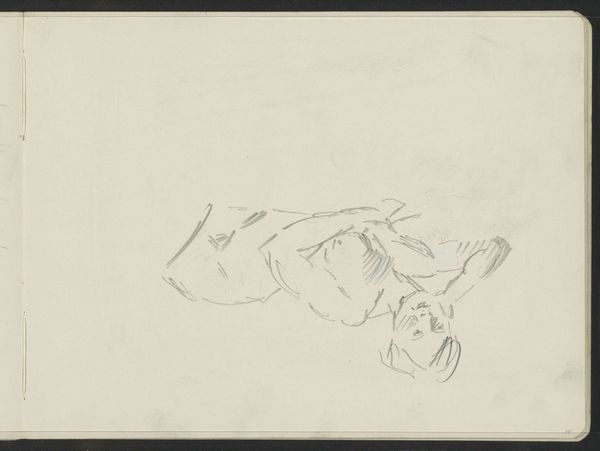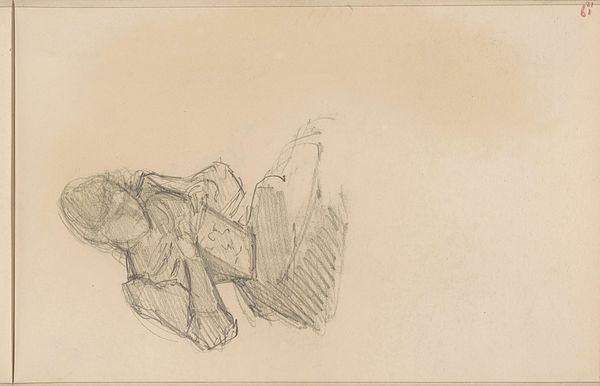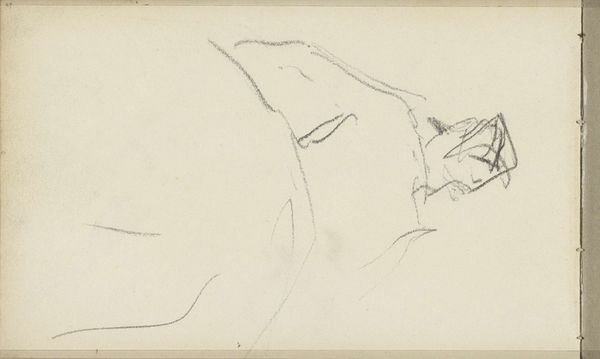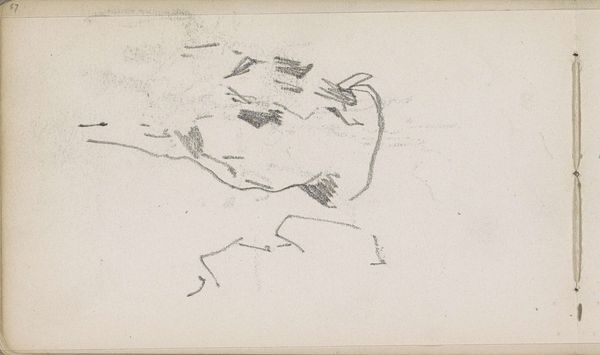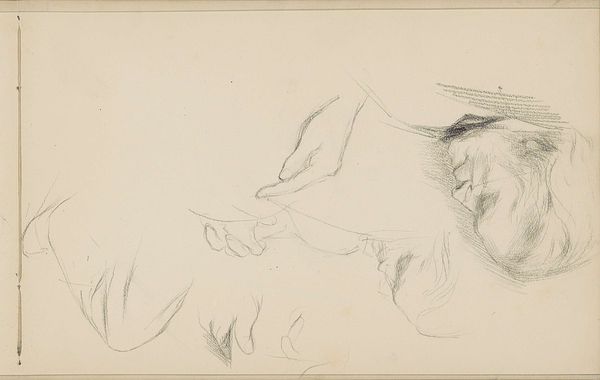
drawing, paper, pencil
#
portrait
#
drawing
#
pencil sketch
#
paper
#
pencil
#
academic-art
#
nude
#
realism
Copyright: Rijks Museum: Open Domain
Curator: The image before us is a drawing from 1874 titled "Kop en schouders van een naakte vrouw," which translates to "Head and Shoulders of a Nude Woman." The artist is George Clausen. Editor: It’s remarkably understated. The pencil on paper creates such soft gradations of tone, almost like a whisper of form emerging from the ground. Curator: Clausen, though British, was heavily influenced by French Realism and the Barbizon school. We see him grappling with the academic nude, yet there’s an undeniable honesty. It reflects the Victorian era's shifting attitudes towards depicting the body, caught between idealization and observed reality. Editor: Exactly, I see the struggle with academic ideals in how the contour fades. The artist isn't defining the body so much as hinting at its presence. Notice how the light seems to dissolve the edges, making it a study of light as much as form. The use of pencil— the varying pressure— communicates a real physical presence. Curator: The Royal Academy and other institutions still held significant sway at the time. These sketches served both as explorations of form and exercises in acceptable representation. How far could you push realism within established norms? The male gaze remained firmly entrenched, and works such as these often danced on a line between the clinical and the sensual. Editor: Interesting. But the cropping, the way the figure occupies only a fraction of the page… I keep returning to the use of negative space. It suggests not just incompleteness but also the ephemeral nature of vision, of our fleeting encounter with beauty. It is about a deconstruction of volume in real space by lines that evoke dimension. Curator: Perhaps it highlights the constraints faced by artists within those power structures. They had to navigate social expectations and patron demands. I wonder how much control the sitter, the nude woman, actually had in shaping her own representation. Editor: I had not considered that aspect, actually. Thinking only in terms of what's actually presented, I'd only venture that there is a fragile and elusive quality that moves me here. Curator: Well, hopefully this perspective helps us both to have an understanding beyond formal conventions to explore this brief but important moment in the artist's journey. Editor: Indeed, considering both art and societal values, it has offered a much deeper view of this seemingly simple image.
Comments
No comments
Be the first to comment and join the conversation on the ultimate creative platform.
